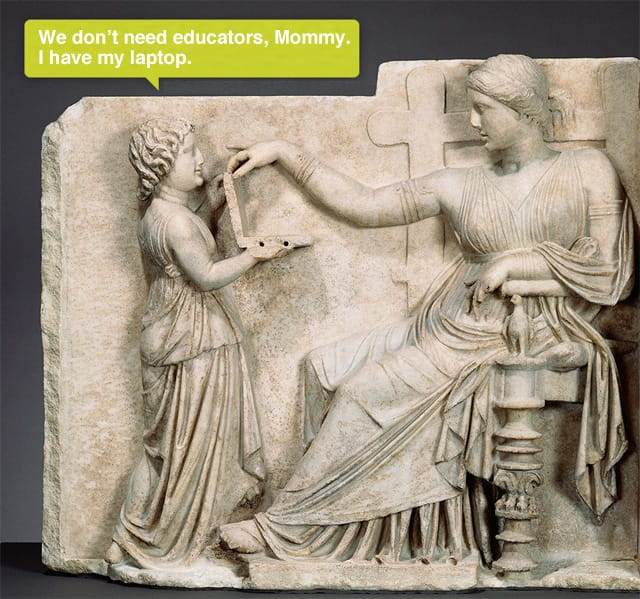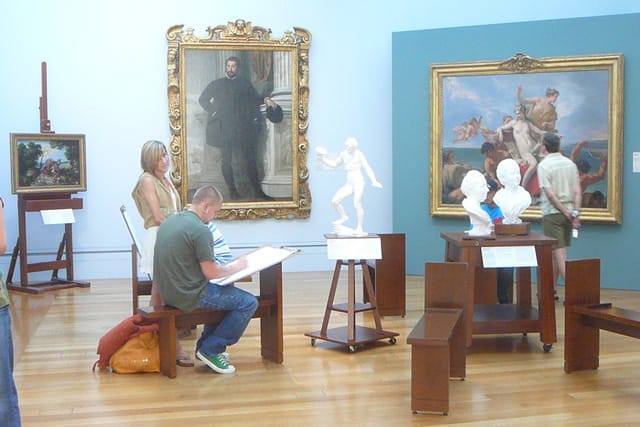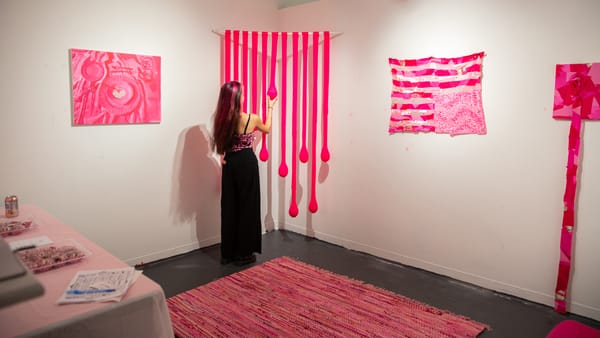Should Museum Acquisitions Come at the Expense of their Education Departments?
Earlier this month, the J. Paul Getty Trust announced that it was cutting 34 jobs in its museum division. In and of itself, this wasn't huge news; despite the absurdly booming art market, the national economy continues to sag, meaning museums have to contend with smaller endowments and less generous

Earlier this month, the J. Paul Getty Trust announced that it was cutting 34 jobs in its museum division. In and of itself, this wasn’t huge news; despite the absurdly booming art market, the national economy continues to sag, meaning museums have to contend with smaller endowments and less generous donors.
While museum cuts are nothing new, the Getty case is notable because of the fact that the cuts fall almost entirely on the institution’s education department. The education staff will decrease from 51 employees to 32, according to the LA Times, and Chasing Aphrodite reported that of the 17 gallery teachers employed, only five will keep their jobs. Curatorial and conservation staffs remain untouched, although there are a handful of layoffs in other areas, such as visitors services.
The Times summed up the major change to the education department:
Volunteer docents, trained by the remaining professional staff, will replace the paid teachers who had led tours of the galleries by students and other groups of visitors. “I think that was unique to the Getty,” [Getty President James] Cuno said, so reassigning the tours to volunteers would bring it in line with the standard practice at other museums.
But are docents really standard practice at most other museums? And even if so, does standard practice mean best practice? The Getty has long been known for its fantastic education program, which no doubt derives in large part from the number of highly skilled, paid museum educators employed the museum. “They have a world-famous reputation for providing some of the highest quality museum education instructional materials available anywhere,” Bob Sabol, president of the National Art Education Association, told Hyperallergic. This begs the question: Why gut and restructure a department that already works so well?
The Getty’s James Cuno offered two reasons for the cuts. The first is saving money, an expected total of $4.3 million annually, which will be redirected to acquisitions. “Acquisitions are at the heart of the Museum’s mission — education, exhibitions, and research flow from the Museum’s collection,” Cuno told Hyperallergic in a written statement. “The funds we saved from the reorganization restore the Museum’s acquisitions budget to its previous levels.”

Still, it’s hard not to be skeptical of how helpful an extra $4.3 million will be in today’s market. Lindsay Ash, a former Getty educator, wrote to Hyperallergic via email:
The Getty is not known for being an institution with a world renowned art collection. They were famous for their Education Department. Now they have neither. I can’t see how the financial savings from one will contribute significantly to the other. Did you see what ‘The Scream’ sold for recently? What does a $4.3 million savings per annum get you in the art world?
Of course it’s worth noting that not every piece that goes up for auction is “The Scream” — presumably smaller, lesser-known works would be more affordable. But George Hein, a former Getty visiting scholar and a museum education expert, told Hyperallergic that when he was there, “the museum spent $45 million on one painting.” And considering the Getty’s $5.6 billion endowment in mid-2011 and its $269.8 million budget in 2010–11, $4.3 million does seem somewhat meager.
The second reason given for the changes is that by reducing costs in the education department, i.e. by bringing in volunteers, the museum can then offer more tours — essentially, increasing tours while decreasing professional, paid staff. Sound familiar? This seems to fall in line with today’s all-too-common workplace phenomenon that less can somehow be more (and that unpaid interns or volunteers can do much of the work).
“If this is happening with just increasing the number of docents, they may have an increased number, but they may not meet their educational mission,” said Sabol. “The museum education staff play a vitally essential role in meeting the museum’s mission. Without that, the docents will basically be relying on their own knowledge.”
In other words, docents are great, but museums need professional educators to train them.
In his statement to Hyperallergic, Cuno countered that the quality of the department’s offerings would not suffer:
This new approach will not reduce our educational programs or the quality of teaching available at the Museum. We have a staff in the Education Department of more than 30 professionals. Five gallery instructors will remain on staff to work with college, adult, VIP, and some school-age audiences. They also will play a major role in the training of a new corps of volunteer instructors, who will enable us to provide far more guided tours than we were previously able to provide.
He went on to provide some numbers, saying that last year, only 39,000 out of 114,000 students who visited the Getty had guided tours given by gallery instructors; the rest were self-guided or had “minimal assistance” from the museum. “An expanded docent teaching corps, carefully selected and expertly trained by our experienced gallery instructors, along with the development of multimedia tours, will enable us to meet our goal of 100% guided tours within the constraints of our budget,” Cuno wrote.
But students aren’t the only group that need or receive tours, and the fact remains that there are only five gallery instructors left to handle college, adult, VIP and some school audiences, as well as to help ensure that the new docent “corps” is, in fact, expertly trained. That sounds like very few people spread very thin, which could affect how good the training is, and thus the tours.
Hein elaborated on the issue of quality: “The big question is what is the museum educator’s background?” he said. “Educators often come out of art historical backgrounds. They know about education, human development, leading groups. Whether volunteer docents are likely to be as good is a good question.” One would assume they have the potential to be, but only after learning extensively from the professionals. And what about the consistency, dedication and creativity of a volunteer docent who comes to the museum one or two days a week versus those of someone who’s pursued a full-time career in museum education? (Not to knock docents — we think they’re great! They’re just different.)
Hein also brought up another interesting and related problem — the diversity of tour guides:
The probability that volunteer docents will reflect the range of society that you want to reach in your tours is very low, because they are people who are free on weekdays during working hours who volunteer their time. It’s very unlikely you’re going to get a lot of working-class folks in that category. If you want to have people who are more able to reflect your community, then I think you would work hard to get a larger range of people and you would pay them.
It’s too early to say how exactly these cuts will affect the Getty’s education department and the quality of its output, but people in the museum education world are concerned — and seemingly with good reason. A 2004 article in Spiked quotes Cuno’s book Whose Muse? Art Museums and the Public Trust, in the process offering insight into what the current Getty director sees as the limits and pitfalls of museum education:
“‘ … [M]useums can supplement education, but the classroom has proved to be the best way of educating people. … Museums are saying: ‘we can keep children off drugs, we can improve test scores. When that doesn’t happen, what have you got left?’ Once they’ve abandoned their mission, ‘museums are left with no justification.’”
But Bob Sabol has a different view:
You think about the museum more as a classroom rather than a warehouse. It’s a place where people go to learn about art. It’s not simply a place where a collection is housed so that it can be protected — it’s there for a purpose. Everybody that goes to a museum is there to learn, whether they realize it or not. If the people that come don’t feel that they have met their reason for going, they’re not going to continue to come.
This conflict, between those who view collections and conservation as the most important part of a museum’s mission and those who think education is equally important is, Hein pointed out, “nothing new.” He quoted Nathaniel Burt’s 1977 book Palaces for the People: A Social History of the American Art Museum. In it, Burt writes, “There is that battle, still contentious, between Instruction and Joy. Are museums Universities of Vision or Churches of the Eye?”
Thirty-five years later, we’re still fighting it.




